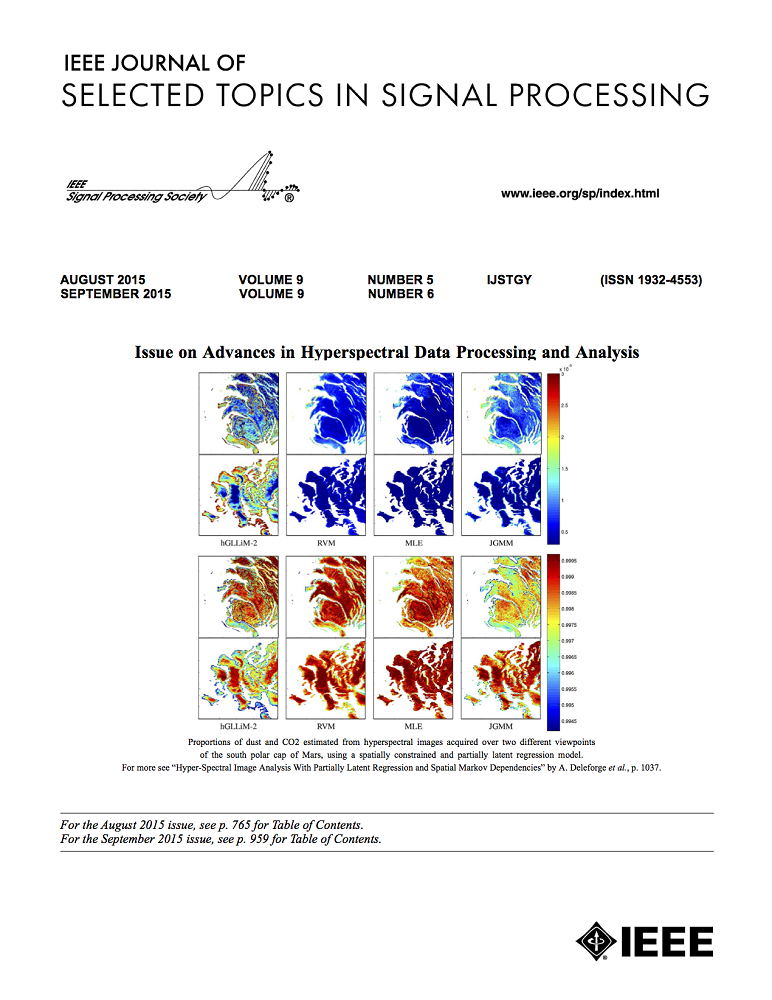太赫兹通信的全波仿真与散射建模
IF 8.7
1区 工程技术
Q1 ENGINEERING, ELECTRICAL & ELECTRONIC
IEEE Journal of Selected Topics in Signal Processing
Pub Date : 2023-06-13
DOI:10.1109/JSTSP.2023.3285099
引用次数: 0
摘要
本文对太赫兹波在粗糙表面上反弹的散射现象进行了全面的分析和建模研究。更具体地说,提出了一种通用的参数化方法,以精确地对粗糙特性进行建模,重点关注表面的均方根(RMS)高度和相关长度。首先,开发了一种基于蒙特卡罗的方法来高效准确地实现这种粗糙表面的软件实现。然后,全波模拟器FEKO用于在300GHz下模拟具有6个RMS高度和5个相关长度的30个不同表面上的散射波的远场行为。采用定向散射(DS)模型,研究了散射系数$S$及其等效粗糙度$\alpha_{R}$在散射振幅方面的变化。此外,获得散射信号的相位和极化的统计特性,并将其与现有3GPP信道模型标准中可用的统计特性进行比较,这些标准对较低频带有效。这些比较表明,尽管相位遵循正态分布,就像等效3GPP信道模型的情况一样,但交叉极化比(XPR)遵循逻辑分布。这是一个重要的差异,可能对当前3GPP相关工作组的标准化活动产生重大影响。最后,通过算法实现了所提出的太赫兹波段散射模型。与仅表征散射信号振幅的经典二维DS模型相比,所提出的三维散射模型可以有效地用于精确表征散射信号的所有重要参数,即太赫兹波段的振幅、相位和偏振。此外,所提出的散射模型可以有效地与射线跟踪(RT)方案结合使用,从而为新的应用(如全息无线电和多用户多输入多输出(MU-MIMO)系统)实现精确的散射和信道建模。本文章由计算机程序翻译,如有差异,请以英文原文为准。
Full-Wave Simulation and Scattering Modeling for Terahertz Communications
This article presents a comprehensive study for analyzing and modeling the scattering phenomenon of terahertz (THz) waves bouncing on rough surfaces. More specifically, a generic parametric methodology to accurately model the rough characteristics focusing on the root-mean-square (RMS) height and correlation length of a surface is proposed. Firstly, a Monte Carlo-based approach is developed for the efficient and accurate software realization of such rough surfaces. Then, the full-wave simulator FEKO is used to simulate at 300 GHz the far-field behavior of scattering waves on 30 distinct surfaces having 6 RMS heights and 5 correlation lengths. By employing the directive scattering (DS) model, the variation of the scattering coefficient,
$S$ $\alpha _{R}$
求助全文
通过发布文献求助,成功后即可免费获取论文全文。
去求助
来源期刊

IEEE Journal of Selected Topics in Signal Processing
工程技术-工程:电子与电气
CiteScore
19.00
自引率
1.30%
发文量
135
审稿时长
3 months
期刊介绍:
The IEEE Journal of Selected Topics in Signal Processing (JSTSP) focuses on the Field of Interest of the IEEE Signal Processing Society, which encompasses the theory and application of various signal processing techniques. These techniques include filtering, coding, transmitting, estimating, detecting, analyzing, recognizing, synthesizing, recording, and reproducing signals using digital or analog devices. The term "signal" covers a wide range of data types, including audio, video, speech, image, communication, geophysical, sonar, radar, medical, musical, and others.
The journal format allows for in-depth exploration of signal processing topics, enabling the Society to cover both established and emerging areas. This includes interdisciplinary fields such as biomedical engineering and language processing, as well as areas not traditionally associated with engineering.
 求助内容:
求助内容: 应助结果提醒方式:
应助结果提醒方式:


